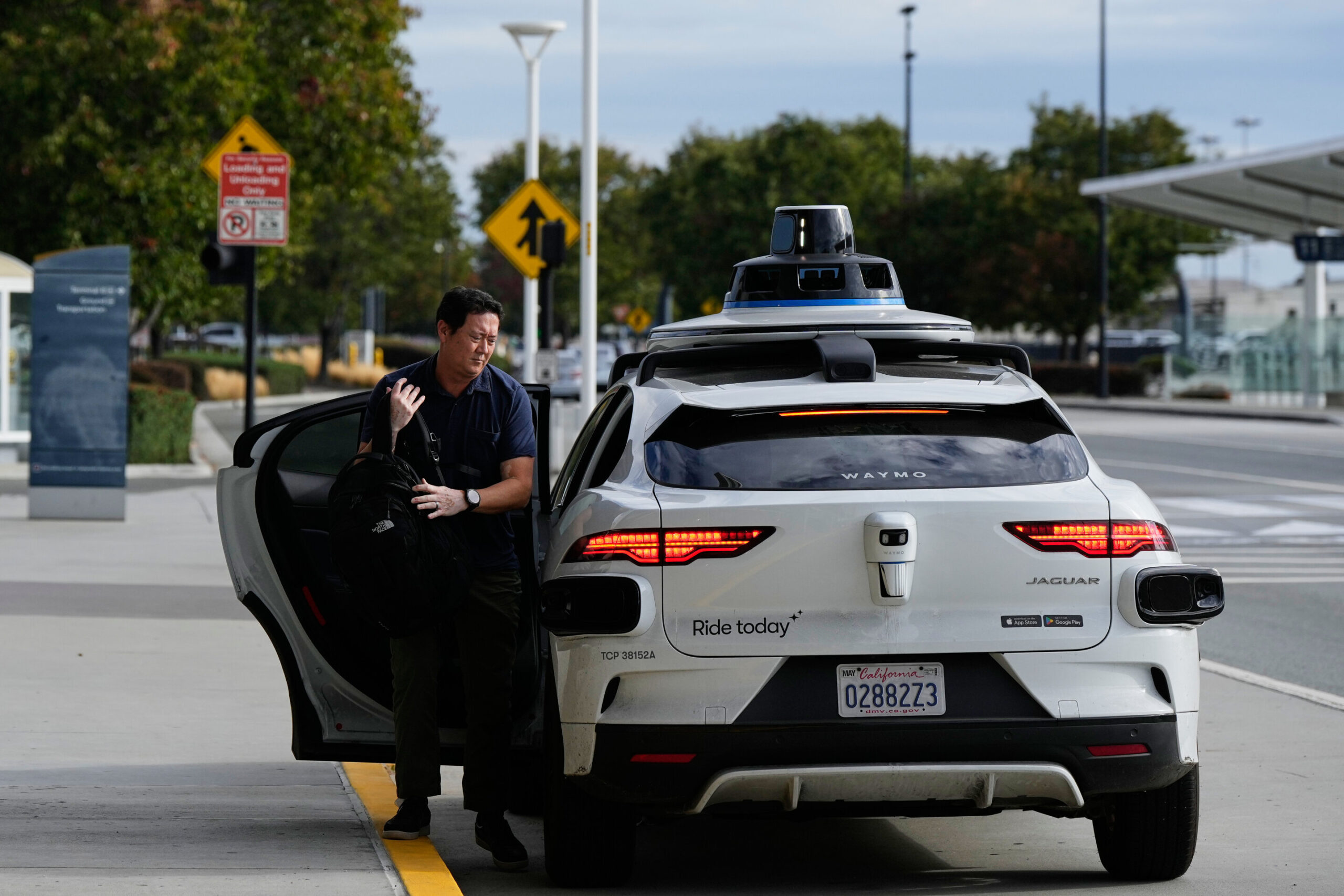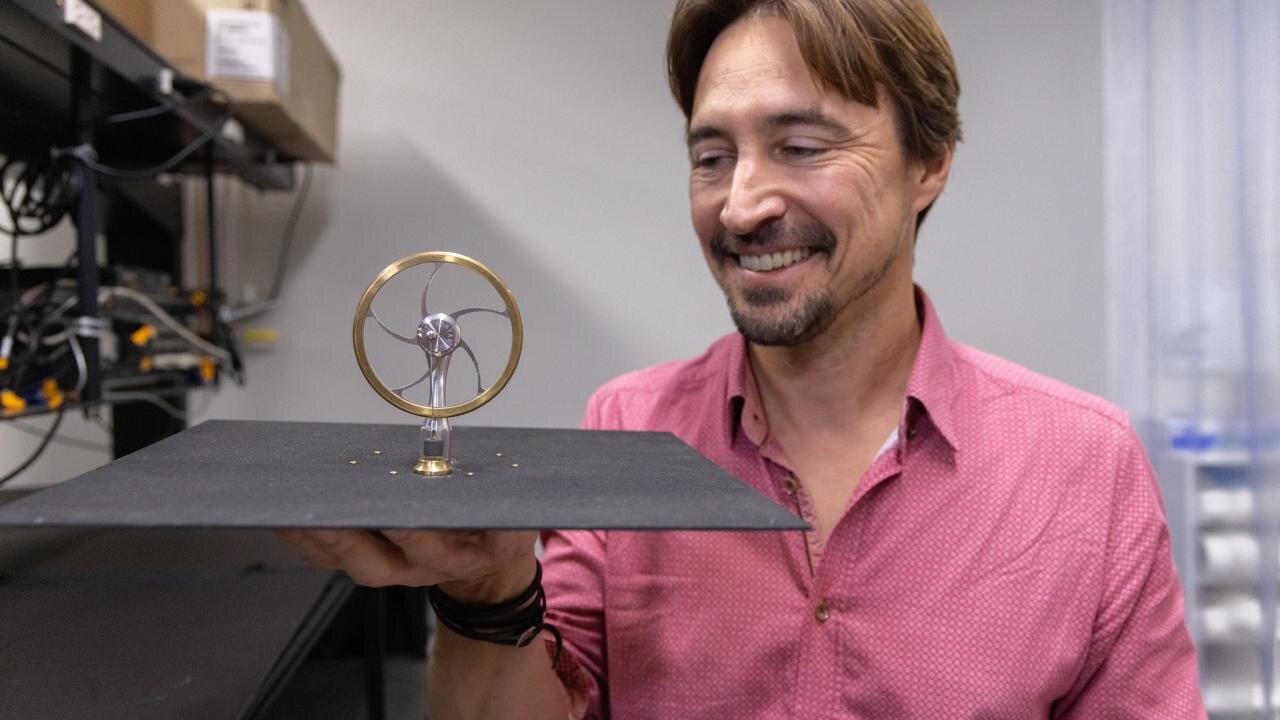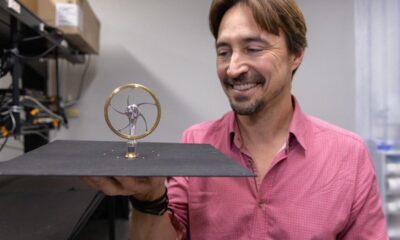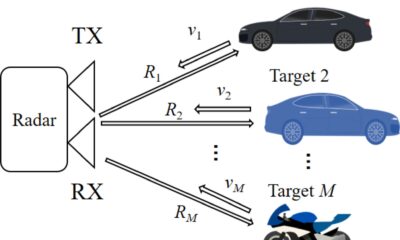Tech
Waymo is hitting the highway. Here’s what to know about the robotaxi’s expanded service

Waymo is hitting the highway. The company said starting Wednesday its robotaxis—already a common sight on some city streets—are expanding their routes to freeways and interstates around San Francisco, Los Angeles and Phoenix. And in the Bay Area, riders can now get dropped off or picked up curbside in driverless cars at San Jose Mineta International Airport. Other regions will get highway service soon, Waymo said.
Expanded service for driverless cars
The highway rollout will be gradual in LA, where Waymo cars with nobody in the driver’s seats are increasingly common downtown and in many residential neighborhoods. But around San Francisco as of this week, the expansion encompasses the entire peninsula to the south of the city, including Silicon Valley hot spots like Palo Alto and Mountain View. Passengers can now hail an autonomous sedan near San Francisco City Hall and take it 45 miles (72 km) on U.S. 101 to San Jose’s airport. Waymos are currently being tested at San Francisco International Airport for eventual curbside service there.
Before deciding to compete against conventional ride-hailing pioneers Uber and Lyft in California, Waymo—owned by Google’s parent company, Alphabet—unleashed its robotaxis in Phoenix in 2020. Now it has extended the reach of its service to highways around that Arizona city.
Down the road, passengers in Atlanta and Austin, Texas, will be able to take freeway rides, the company said.

Waymo has little competition so far
Waymo has come a long way since Google began working on self-driving cars in 2009 as part of project “Chauffeur.” Since its 2016 spinoff from Google, Waymo has established itself as the leader in a robotaxi industry that’s slowly getting more congested.
Amazon announced in June that it’s gearing up to make as many as 10,000 robotaxis annually at a plant near Silicon Valley as it prepares to challenge Waymo. Amazon began eyeing the market five years ago when it shelled out $1.2 billion for self-driving startup Zoox. In September, Zoox launched its robotaxi service in Las Vegas on a limited basis.
Electric auto pioneer Tesla has said it aims to launch a rival “Cybercab” service by 2026. The projected timeline for competing against Waymo has been met with skepticism because Tesla CEO Elon Musk has made unfulfilled promises about the company’s self-driving car technology for nearly a decade.
General Motors late last year retreated from the robotaxi business and stopped funding its money-losing Cruise autonomous vehicle unit. Instead the Detroit automaker is focusing on development of partially automated driver-assist systems for personal vehicles like its Super Cruise, which allows drivers to take their hands off the steering wheel.

Autonomous vehicles are doing many jobs
Residents of San Francisco, Los Angeles and other cities who order a pizza or burrito on DoorDash might have it delivered by a robot that the company has dubbed Dot. Soon people in Phoenix will also get Dot deliveries as the company expands its autonomous service. The robot can reach speeds of up to 20 miles per hour and travel on streets, sidewalks and driveways. Dot is bright red, resembles a big baby stroller and is large enough to handle up to six large pizza boxes or 30 pounds of cargo.
San Francisco-based DoorDash decided to develop its own robot after finding that other delivery machines on the market, which are mostly designed for short runs on college campuses or urban sidewalks, weren’t capable of operating in suburban neighborhoods.
DoorDash has also been testing drone delivery for several years in Australia, Texas and North Carolina.
On a larger scale, the shipping giant Maersk uses driverless electric cargo handlers at four terminals at the twin ports of Los Angeles and Long Beach, the nation’s largest dockyard.
-

A passenger inside a Waymo vehicle looks out of the window while leaving the San Jose Mineta International Airport, Wednesday, Nov. 12, 2025, in San Jose, Calif. Credit: AP Photo/Godofredo A. Vásquez
-

A Waymo vehicle waits as a pedestrian walks on a crosswalk at the San Jose Mineta International Airport, Wednesday, Nov. 12, 2025, in San Jose, Calif. Credit: AP Photo/Godofredo A. Vásquez
Safety concerns
The proliferation of autonomous vehicles has of course raised safety concerns. A new California law that kicks in next year will help authorities to hold driverless car companies responsible for traffic violations. Supporters of the legislation say it is an essential step toward bringing liability and enforcement measures in line with advancing technology.
The law comes after police in San Bruno, south of San Francisco, tried to ticket a self-driving vehicle for an illegal U-turn earlier this year. The police department said in a now-viral social media post that officers stopped the vehicle, but declined to write a ticket as their “citation books don’t have a box for ‘robot’.” Police contacted Waymo to report what they called a “glitch,” and in the post, they said they hope reprogramming will deter more illegal moves.
Waymo has said the company’s autonomous driving system is closely monitored by regulators.
© 2025 The Associated Press. All rights reserved. This material may not be published, broadcast, rewritten or redistributed without permission.
Citation:
Waymo is hitting the highway. Here’s what to know about the robotaxi’s expanded service (2025, November 13)
retrieved 13 November 2025
from https://techxplore.com/news/2025-11-waymo-highway-robotaxi.html
This document is subject to copyright. Apart from any fair dealing for the purpose of private study or research, no
part may be reproduced without the written permission. The content is provided for information purposes only.
Tech
DHS Kept Chicago Police Records for Months in Violation of Domestic Espionage Rules

On November 21, 2023, field intelligence officers within the Department of Homeland Security quietly deleted a trove of Chicago Police Department records. It was not a routine purge.
For seven months, the data—records that had been requested on roughly 900 Chicagoland residents—sat on a federal server in violation of a deletion order issued by an intelligence oversight body. A later inquiry found that nearly 800 files had been kept, which a subsequent report said breached rules designed to prevent domestic intelligence operations from targeting legal US residents. The records originated in a private exchange between DHS analysts and Chicago police, a test of how local intelligence might feed federal government watchlists. The idea was to see whether street-level data could surface undocumented gang members in airport queues and at border crossings. The experiment collapsed amid what government reports describe as a chain of mismanagement and oversight failures.
Internal memos reviewed by WIRED reveal that the dataset was first requested by a field officer in the DHS’s Office of Intelligence & Analysis (I&A) in the summer of 2021. By then, Chicago’s gang data was already notorious for being riddled with contradictions and error. City inspectors had warned that police couldn’t vouch for its accuracy. Entries created by police included people purportedly born before 1901 and others who appeared to be infants. Some were labeled by police as gang members but not linked to any particular group.
Police baked their own contempt into the data, listing people’s occupations as “SCUM BAG,” “TURD,” or simply “BLACK.” Neither arrest nor conviction was necessary to make the list.
Prosecutors and police relied on the designations of alleged gang members in their filings and investigations. They shadowed defendants through bail hearings and into sentencing. For immigrants, it carried extra weight. Chicago’s sanctuary rules barred most data sharing with immigration officers, but a carve-out at the time for “known gang members” left open a back door. Over the course of a decade, immigration officers tapped into the database more than 32,000 times, records show.
The I&A memos—first obtained by the Brennan Center for Justice at NYU through a public records request—show that what began inside DHS as a limited data-sharing experiment seems to have soon unraveled into a cascade of procedural lapses. The request for the Chicagoland data moved through layers of review with no clear owner, its legal safeguards overlooked or ignored. By the time the data landed on I&A’s server around April 2022, the field officer who had initiated the transfer had left their post. The experiment ultimately collapsed under its own paperwork. Signatures went missing, audits were never filed, and the deletion deadline slipped by unnoticed. The guardrails meant to keep intelligence work pointed outward—toward foreign threats, not Americans—simply failed.
Faced with the lapse, I&A ultimately killed the project in November 2023, wiping the dataset and memorializing the breach in a formal report.
Spencer Reynolds, a senior counsel at the Brennan Center, says the episode illustrates how federal intelligence officers can sidestep local sanctuary laws. “This intelligence office is a workaround to so-called sanctuary protections that limit cities like Chicago from direct cooperation with ICE,” he says. “Federal intelligence officers can access the data, package it up, and then hand it off to immigration enforcement, evading important policies to protect residents.”
Tech
Stirling engine generates mechanical power by linking Earth’s warmth to space

Engineers at the University of California, Davis, have invented a device that can generate mechanical power at night by linking the natural warmth around us to the cold depths of space. The invention could be used, for example, to ventilate greenhouses or other buildings. The work is described Nov. 12 in Science Advances.
The invention is a type of machine called a Stirling engine. Other machines such as internal combustion engines generate power from a large heat gradient, said Jeremy Munday, professor of electrical and computer engineering at UC Davis and co-author on the paper. In contrast, a Stirling engine can work based on a small difference in temperature, such as that between a hot cup of coffee and its surroundings.
“These engines are very efficient when only small temperature differences exist, whereas other types of engines work better with larger temperature differences and can produce more power,” Munday said.
Typically, a Stirling engine is directly connected to a heat source on one side and a cooler environment on the other side.
“If you just set it on the table, it’s not going to produce any power on its own because all sides are the same temperature,” Munday said.
One way to generate a temperature difference, of course, is to heat up one side by burning fuel. Munday and graduate student researcher Tristan Deppe wondered if instead they could connect the cold side to something very, very cold but also very far away: deep space.
“It doesn’t actually have to touch space physically, it can just interact radiatively with space,” Munday said. It’s like standing outside on a cold, clear night: Your head will quickly start to feel cold as heat radiates away.
Deppe and Munday’s idea was to take a simple Stirling engine (essentially a piston driving a flywheel), put it on a panel that acts as a heat-radiating antenna and sit the whole thing on the ground outdoors at night. The ground acts as the warm side of the engine and the antenna channels the cold of space.
A year of night time experiments shows that the small device can indeed generate at least 400 milliwatts of mechanical power per square meter. The researchers used the device experimentally to directly power a fan and also coupled it to a small electrical motor to generate current.
The experiments show that it is possible to generate useful amounts of power from the night sky. The potential is greatest in areas where humidity is low and night skies are usually clear, Munday said. The principle could be used, for example, to ventilate greenhouses or residential buildings.
UC Davis has filed a provisional patent related to the work.
More information:
Tristan J. Deppe et al, Mechanical power generation using Earth’s ambient radiation, Science Advances (2025). DOI: 10.1126/sciadv.adw6833
Citation:
Stirling engine generates mechanical power by linking Earth’s warmth to space (2025, November 12)
retrieved 12 November 2025
from https://techxplore.com/news/2025-11-stirling-generates-mechanical-power-linking.html
This document is subject to copyright. Apart from any fair dealing for the purpose of private study or research, no
part may be reproduced without the written permission. The content is provided for information purposes only.
Tech
Our Favorite Travel and Outdoor Gear Is on Sale at Huckberry

Huckberry, purveyors of finely curated clothing and gear for the sort of person equally at home in the woods and the city, is having one of the company’s rare site-wide sales this week—or pretty close to site-wide. We’ve tested and love quite a bit of Huckberry’s stuff, especially the Proof 72-hour merino T-shirt. If you buy nothing else this year, buy that. Trust me. Check out the other deals, which we’ve rounded up below.
Great Deals on our Favorite Travel Clothes
Huckberry’s Proof 72-hour merino T-shirt is our favorite merino wool T-shirt. The cut and style are not overly sporty, making it more versatile than some others, from everyday wear around town to a trip to the gym. Mine is still soft even after six months of wear and washing. At 87 percent 150 gsm superfine merino wool (16.5 micron) and 13 percent nylon, this T-shirt makes a great starter for those new to merino wool—there’s enough nylon that’s stretchy, and not the least bit itchy.
These pants are the companion piece to the 72-hour shirt above. There’s quite a bit less wool here though. The breakdown is 47 percent merino wool, 33 percent nylon, 14 percent polyester, and 6 percent elastane. The result is a much stretchier fabric than the t-shirt, which still provides a good amount of moisture-wicking and the anti-odor properties of merino. My only gripe with these is that they feel synthetic. What I love about them is the stain resistance. Yes, that DWR coating that gives them that stain resistance will wear off, but it’s not too hard to rejuvenate it.
When I travel, these are the pants I wear. They’re light, comfy, stretchy, and weigh next to nothing. They’re 98 percent cotton, with 2 percent Spandex to give them a little stretch. Unlike jeans, these have enough flex that you can easily do squats in them. It’s possible that translates to some stretching out over time, but I’ve been wearing mine for going on a year now and they still fit perfectly.
I love this jacket. It’s the only jacket I’ve ever worn that anyone has complimented me on, which is also the case for another WIRED staffer. Waxed canvas is definitely heavy, but it stands up very well to wear. I’ve had my Trucker Jacket for well over a year and it still looks like new. I don’t need to re-wax it yet, but I have re-waxed other things and it’s dead simple to do. There’s also a wool-lined version, which I have not tried but I do kinda wish I had that instead of the flannel. It’s on sale as well.
Deals on Backpacks, Coffee Brewers, and Other Gear
Courtesy of Huckberry
GoRucks are awesome backpacks, but they aren’t cheap. Here’s a chance to get the GoRuck GR1 for a bit less. This is a collaboration between GoRuck and Huckberry, with branding from both companies on the pack. My favorite thing about the GR1 is its versatility. I have used this pack for plane travel (as a carry-on), rucking, hiking, hauling camera gear, and more. I even strapped it to the back rack of my bike for an overnight bikepacking trip. If you want to ruck with it, grab a weight plate as well.
The Yeti Hopper Flip 12 is a nice little personal-size cooler. Hopper Flip 12 closes with a water proof zipper, which has never leaked on my thus far. With 12 quarts of capacity, it’s not huge. Think a six pack and sandwich, depending on what you use to keep things cold (ice packs are the way to go with this one).
This isn’t a huge discount, but any time you can save some money on Snow Peak it’s a win. The company’s incredibly well-designed gear isn’t cheap. Take this mug, which amounts to a $47 coffee mug. But look, it’s titanium, OK? And it’s double-walled so your coffee stays warm even on those bitter cold mornings at the cabin. (Ed. note: These are editor Adrienne So’s camping mugs and she’s used them for about 10 years now.)
If you’re going to get the mug, you might as well get the French press too.
You see where we’re going here—mug, brewer, and now grinder. Yes, this is a $140 (on sale!) military-grade aluminum and high-carbon stainless steel burr grinder, which, I know, that’s a lot, This is also hands down the best most reliable hand grinder I’ve ever used. Mine is five years old and has stood up to the abuse of years and years of travel without missing a beat. It’s missing a little paint, but otherwise works exactly like the day I got it. On sale, I might add.
Photograph: Peak Design
The Everyday Backpack is one of our favorite camera bags, but it doesn’t have to be that. It’s really just a nice EDC backpack with some well thought out features, like a tuck-away waist strap, three FlexFold dividers, and a nice strap for attaching it to the handle of your rolling carry on bag.
Power up with unlimited access to WIRED. Get best-in-class reporting and exclusive subscriber content that’s too important to ignore. Subscribe Today.
-

 Business1 week ago
Business1 week agoGST rationalisation impact: Higher RBI dividend expected to offset revenue shortfall; CareEdge flags tax pressure – The Times of India
-

 Tech1 week ago
Tech1 week agoBlood Tests for Alzheimer’s Are Here
-

 Business1 week ago
Business1 week agoSetback for expatriates? Delhi HC upholds mandatory EPFO membership; what this means for foreign staff – The Times of India
-

 Fashion1 week ago
Fashion1 week agoGermany’s Adidas achieves highest-ever quarterly sales in Q3 2025
-

 Politics1 week ago
Politics1 week agoTrump links Republicans’ election setbacks to record US govt shutdown
-

 Fashion1 week ago
Fashion1 week agoBangladesh Bank allows foreign currency-taka swap facility for dealers
-

 Tech1 week ago
Tech1 week agoThe AI Data Center Boom Is Warping the US Economy
-

 Sports1 week ago
Sports1 week agoPeat wows in debut as Arizona beats No. 3 Florida




















